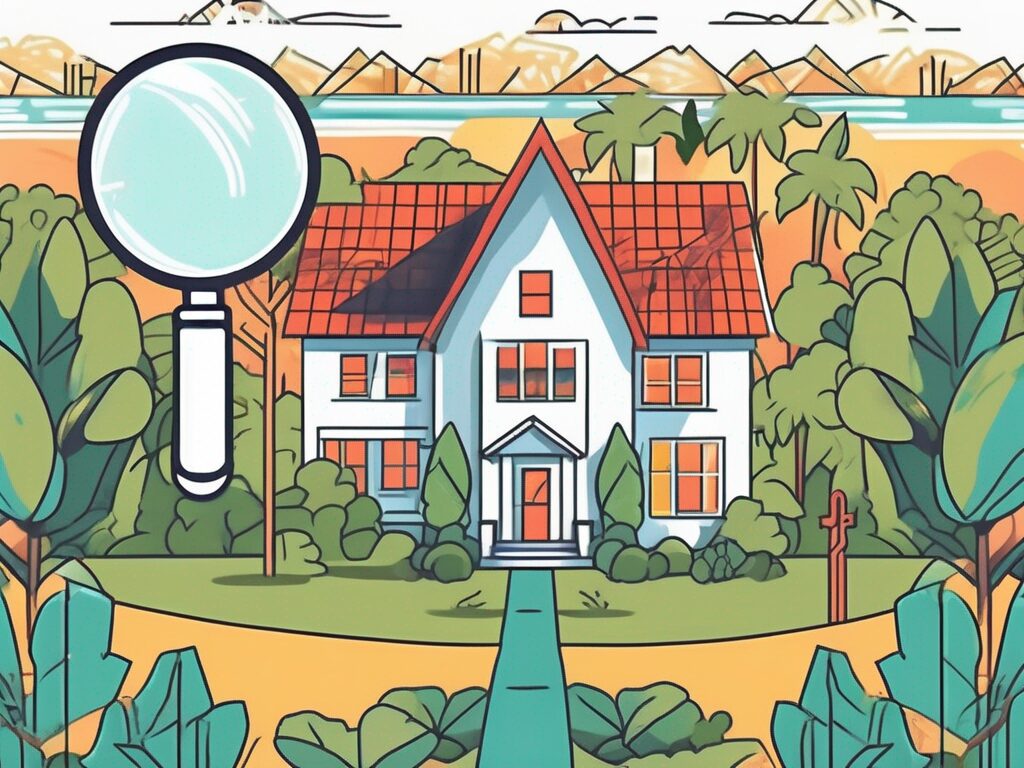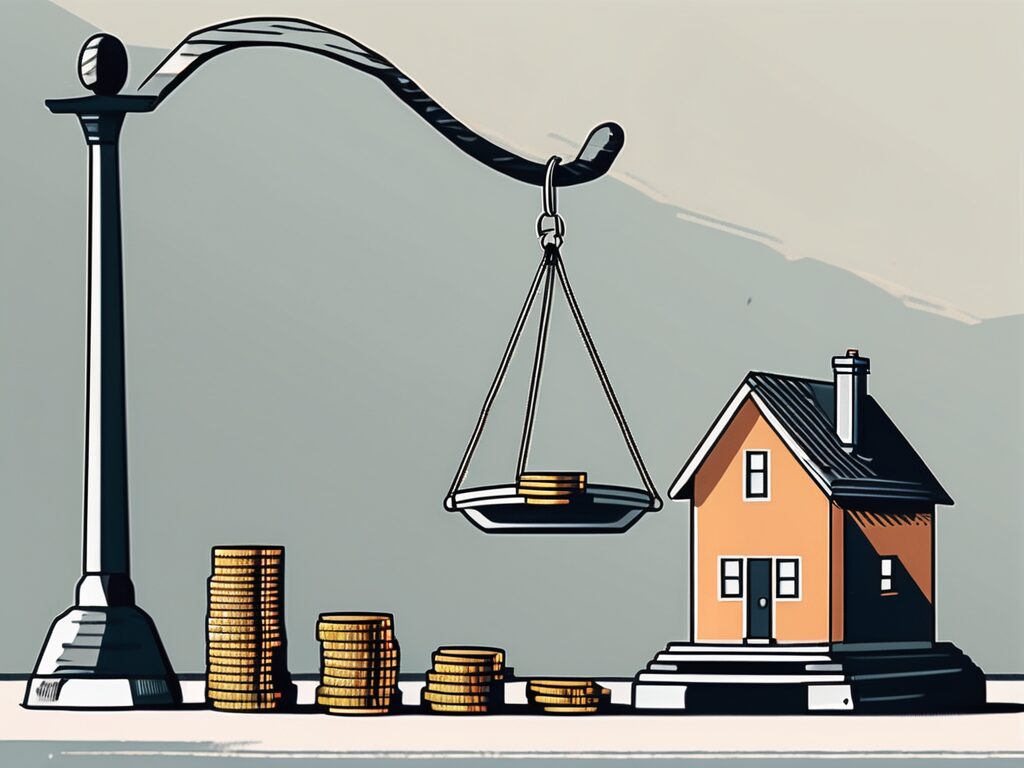
Agent A-Team or Solo Superhero? Finding the Right Real Estate Partner for Your Selling Journey in Wildwood Florida
When it comes to selling your home in Wildwood, Florida,…
January 29, 2024
As homeowners approach retirement age, many consider a reverse mortgage as a potential financial solution. However, it’s essential to understand the costs associated with this type of mortgage before making any commitments. In this comprehensive guide, we will explore the various expenses involved in a reverse mortgage, the long-term financial considerations, the process of obtaining a reverse mortgage, and tips for choosing the right mortgage lender. We will also take a closer look at different types of mortgage loans and provide essential tips for first-time homebuyers.
When considering a reverse mortgage, it’s crucial to be aware of the initial expenses associated with this type of loan. These expenses can include:
1. Origination Fee: This fee covers the lender’s costs of processing the reverse mortgage application. It typically ranges from 0.5% to 2% of the loan amount.
When applying for a reverse mortgage, it’s important to understand the origination fee and how it affects the overall cost of the loan. This fee compensates the lender for their services in evaluating your application, determining your eligibility, and processing the necessary paperwork. The percentage of the origination fee can vary depending on the lender and the specific terms of the loan.
2. Mortgage Insurance Premium (MIP): Reverse mortgages are insured by the Federal Housing Administration (FHA). As part of the MIP, borrowers are required to pay an upfront premium of 2% of the home’s appraised value.
The mortgage insurance premium is a critical component of a reverse mortgage. It provides protection for both the borrower and the lender. The upfront premium is calculated based on the appraised value of the home and helps to ensure that the lender is protected in the event that the loan balance exceeds the value of the home.
3. Appraisal Fee: To determine the value of the property, a professional appraisal is necessary. This fee can vary but generally falls within the range of a few hundred dollars.
An appraisal is a crucial step in the reverse mortgage process. It provides an unbiased evaluation of the property’s value, which is used to determine the maximum loan amount available to the borrower. The appraisal fee covers the cost of hiring a licensed appraiser to assess the property’s worth accurately.
4. Closing Costs: These costs include items such as title insurance, recording fees, and other miscellaneous charges, which can range from 2% to 5% of the home’s value.
Closing costs are an essential consideration when obtaining a reverse mortgage. These costs cover various expenses associated with the transfer of ownership and the creation of the reverse mortgage. Examples of closing costs include title insurance, which protects the lender and the borrower against any potential legal issues related to the property’s ownership, and recording fees, which are paid to the local government to officially record the mortgage.
5. Reverse Mortgage Counseling: Before proceeding with a reverse mortgage, homeowners are required to undergo counseling from an approved agency. These counseling fees typically range from $125 to $250.
Reverse mortgage counseling is a valuable resource for homeowners considering this type of loan. During the counseling session, a certified counselor will provide information and guidance on the benefits and risks of a reverse mortgage. The counselor will review your financial situation, explain the terms and conditions of the loan, and help you make an informed decision.
It’s important to note that these expenses can be financed as part of the loan and do not need to be paid upfront, making a reverse mortgage accessible to many homeowners.
While the initial expenses of a reverse mortgage are essential to understand, it’s also crucial to consider the long-term financial implications. Here are some factors to consider:
1. Interest Rates: Reverse mortgages often have variable interest rates, meaning they can fluctuate over time. It’s crucial to review the terms carefully and consider how changes in interest rates may impact your financial situation.
Interest rates play a significant role in the overall cost of a reverse mortgage. Variable interest rates can increase or decrease over time, affecting the amount of interest you’ll pay on the loan. It’s important to carefully review the terms and conditions of the loan, including any interest rate adjustments, to ensure that you understand how changes in interest rates may impact your monthly payments and the total amount owed.
2. Mortgage Insurance Premium (MIP): In addition to the upfront MIP, borrowers are also required to pay an ongoing MIP throughout the life of the loan. This insurance protects lenders against potential losses and is typically around 1.25% of the loan balance annually.
The ongoing mortgage insurance premium is an important consideration when evaluating the long-term financial implications of a reverse mortgage. This insurance premium helps protect the lender in the event that the loan balance exceeds the value of the home. It’s important to factor in this additional cost when determining the affordability of a reverse mortgage.
3. Home Value Appreciation: The value of your home will play a significant role in determining the amount of equity available through a reverse mortgage. If your home appreciates in value, you may have access to more funds later on.
Home value appreciation can have a positive impact on the equity available through a reverse mortgage. If the value of your home increases over time, you may have the opportunity to access additional funds through a line of credit or receive higher monthly payments. It’s important to consider the potential for home value appreciation when evaluating the long-term financial benefits of a reverse mortgage.
4. Debt Accumulation: A reverse mortgage allows you to tap into your home’s equity, which can result in the accumulation of debt. It’s essential to carefully consider how this debt will impact your financial situation in the long run.
While a reverse mortgage can provide financial flexibility and access to funds, it’s important to understand that it is a loan and will accumulate debt over time. The amount of debt will depend on factors such as the loan amount, interest rates, and how long you hold the loan. It’s crucial to consider your long-term financial goals and obligations when deciding if a reverse mortgage is the right option for you.
Before proceeding with a reverse mortgage, it’s critical to consult with a financial advisor who can provide personalized insights into your specific financial circumstances. They can help you evaluate the costs, benefits, and potential risks associated with a reverse mortgage, ensuring that you make an informed decision that aligns with your long-term financial goals.
The process of obtaining a reverse mortgage can seem complex, but with the right guidance, it can be navigated smoothly. Here is a step-by-step guide to help you through the process:
Navigating the reverse mortgage process may require patience and diligence, but with careful planning, it can provide financial stability and peace of mind in your retirement years.
When it comes to educating yourself about reverse mortgages, there are several resources available to you. You can start by reading articles and guides online, watching informative videos, or attending seminars hosted by financial experts. Additionally, consider reaching out to local organizations or agencies that specialize in reverse mortgages. They can provide you with personalized advice and answer any questions you may have.
Once you have gathered enough information and feel confident in pursuing a reverse mortgage, it’s time to find a reputable lender. Take the time to research and compare different lenders to ensure you find the one that best suits your needs. Look for lenders who have a strong track record in the industry and positive reviews from previous clients. It’s also important to review and compare the terms and conditions offered by different lenders, including interest rates, fees, and repayment options.
Before proceeding further, it is highly recommended to attend reverse mortgage counseling. This counseling session is designed to provide you with unbiased information and guidance specific to your situation. A certified counselor will review your financial circumstances, explain the pros and cons of a reverse mortgage, and help you determine if it’s the right choice for you. They will also ensure that you fully understand your rights and obligations as a borrower, as well as any potential risks involved.
Once you have completed the counseling session, you will need to gather the necessary documentation required by the lender. This may include identification documents, proof of income, bank statements, tax returns, and property information. It’s important to have these documents organized and readily available to expedite the application process.
Completing the application for a reverse mortgage can be a collaborative effort between you and the lender. The lender will guide you through the necessary paperwork and review your documents to assess your eligibility. They may also request additional information or clarification on certain aspects of your application. It’s important to be responsive and provide any requested information promptly to avoid delays in the process.
As part of the reverse mortgage process, an independent appraiser will visit your property to evaluate its current market value. This appraisal is necessary for the lender to determine the maximum loan amount you can qualify for. The appraiser will assess various factors, such as the condition of the property, its location, and recent sales of comparable homes in the area. It’s important to note that you, as the borrower, are responsible for covering the cost of the appraisal.
Once your application and property appraisal are complete, the lender will review your file and provide a loan approval decision. If approved, you can proceed to the final stage of the process, which is the closing and disbursement. At the closing, you will meet with the lender or a representative to sign the necessary loan documents. You will also be required to pay any outstanding fees or costs associated with the loan. Once all the paperwork is completed, the lender will disburse the funds to you based on the payment option you have chosen.
It’s important to remember that obtaining a reverse mortgage comes with ongoing responsibilities. As a borrower, you are required to maintain property insurance, pay property taxes, and keep the property in good condition. Failure to fulfill these responsibilities could result in defaulting on the loan. It’s crucial to budget and plan accordingly to ensure you can meet these obligations throughout the life of the reverse mortgage.
When choosing a mortgage lender for a reverse mortgage, it’s essential to consider factors such as reputation, experience, customer service, and loan options. Here are some top mortgage lenders known for their expertise in reverse mortgages:
When selecting a mortgage lender, it’s important to consider your individual needs and priorities. Researching and comparing lenders will help you make an informed decision that aligns with your financial goals.
Before deciding on a reverse mortgage, it’s important to explore and understand the different types of mortgage loans available. Here’s a comprehensive look:
Each type of mortgage loan serves different purposes, and it’s crucial to evaluate your financial situation and goals before choosing the right one for you.
For first-time homebuyers, the process of purchasing a home can be both exciting and overwhelming. Here are some essential tips to help you navigate the home buying journey:
Purchasing your first home is a significant milestone. By following these tips and seeking professional guidance, you can make informed decisions and find the home that meets your needs and financial goals.
In conclusion, a reverse mortgage can provide financial flexibility for retirees, but it’s vital to understand the true costs involved. By familiarizing yourself with the initial expenses, long-term financial considerations, and the reverse mortgage process, you can make an informed decision about whether it’s the right option for you. Additionally, exploring different mortgage loan options and considering essential tips for first-time homebuyers can help you navigate the broader realm of homeownership with confidence. Remember that seeking professional advice and conducting thorough research are integral to making sound financial decisions. With careful planning and a holistic understanding of the reverse mortgage landscape, you can make the best choice for your retirement years.

If you want the Richr team to help you save thousands on your home just book a call.
 Book a call
Book a call